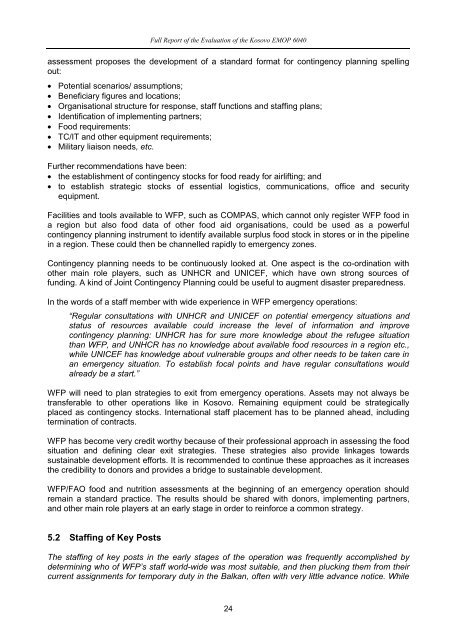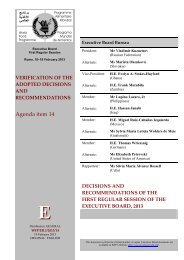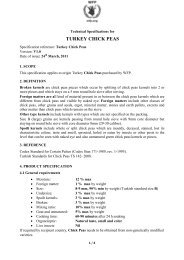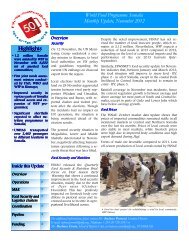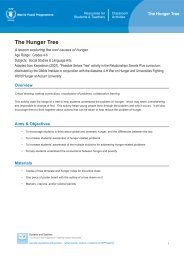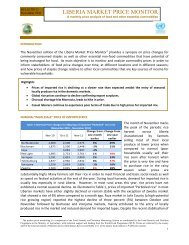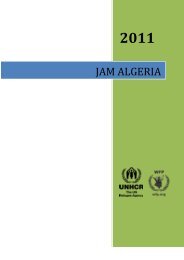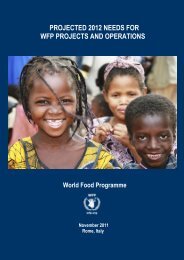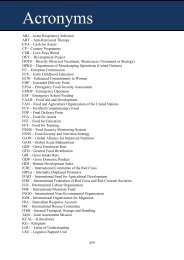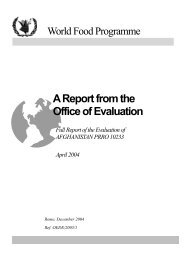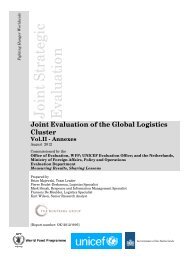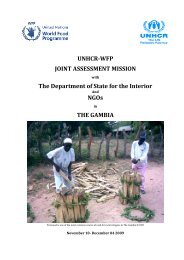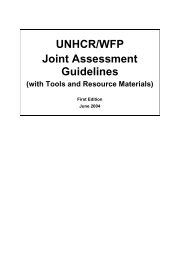Full Report - WFP Remote Access Secure Services
Full Report - WFP Remote Access Secure Services
Full Report - WFP Remote Access Secure Services
You also want an ePaper? Increase the reach of your titles
YUMPU automatically turns print PDFs into web optimized ePapers that Google loves.
<strong>Full</strong> <strong>Report</strong> of the Evaluation of the Kosovo EMOP 6040<br />
assessment proposes the development of a standard format for contingency planning spelling<br />
out:<br />
• Potential scenarios/ assumptions;<br />
• Beneficiary figures and locations;<br />
• Organisational structure for response, staff functions and staffing plans;<br />
• Identification of implementing partners;<br />
• Food requirements:<br />
• TC/IT and other equipment requirements;<br />
• Military liaison needs, etc.<br />
Further recommendations have been:<br />
• the establishment of contingency stocks for food ready for airlifting; and<br />
• to establish strategic stocks of essential logistics, communications, office and security<br />
equipment.<br />
Facilities and tools available to <strong>WFP</strong>, such as COMPAS, which cannot only register <strong>WFP</strong> food in<br />
a region but also food data of other food aid organisations, could be used as a powerful<br />
contingency planning instrument to identify available surplus food stock in stores or in the pipeline<br />
in a region. These could then be channelled rapidly to emergency zones.<br />
Contingency planning needs to be continuously looked at. One aspect is the co-ordination with<br />
other main role players, such as UNHCR and UNICEF, which have own strong sources of<br />
funding. A kind of Joint Contingency Planning could be useful to augment disaster preparedness.<br />
In the words of a staff member with wide experience in <strong>WFP</strong> emergency operations:<br />
“Regular consultations with UNHCR and UNICEF on potential emergency situations and<br />
status of resources available could increase the level of information and improve<br />
contingency planning: UNHCR has for sure more knowledge about the refugee situation<br />
than <strong>WFP</strong>, and UNHCR has no knowledge about available food resources in a region etc.,<br />
while UNICEF has knowledge about vulnerable groups and other needs to be taken care in<br />
an emergency situation. To establish focal points and have regular consultations would<br />
already be a start.”<br />
<strong>WFP</strong> will need to plan strategies to exit from emergency operations. Assets may not always be<br />
transferable to other operations like in Kosovo. Remaining equipment could be strategically<br />
placed as contingency stocks. International staff placement has to be planned ahead, including<br />
termination of contracts.<br />
<strong>WFP</strong> has become very credit worthy because of their professional approach in assessing the food<br />
situation and defining clear exit strategies. These strategies also provide linkages towards<br />
sustainable development efforts. It is recommended to continue these approaches as it increases<br />
the credibility to donors and provides a bridge to sustainable development.<br />
<strong>WFP</strong>/FAO food and nutrition assessments at the beginning of an emergency operation should<br />
remain a standard practice. The results should be shared with donors, implementing partners,<br />
and other main role players at an early stage in order to reinforce a common strategy.<br />
5.2 Staffing of Key Posts<br />
The staffing of key posts in the early stages of the operation was frequently accomplished by<br />
determining who of <strong>WFP</strong>’s staff world-wide was most suitable, and then plucking them from their<br />
current assignments for temporary duty in the Balkan, often with very little advance notice. While<br />
24


